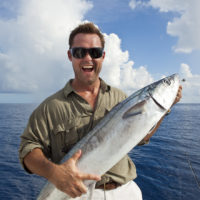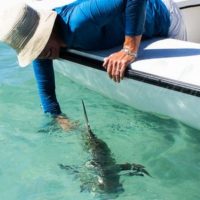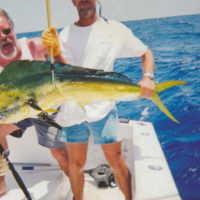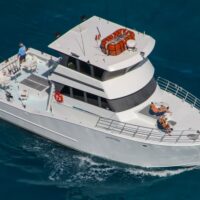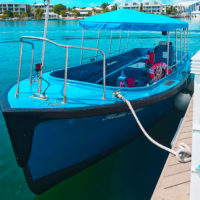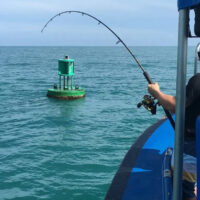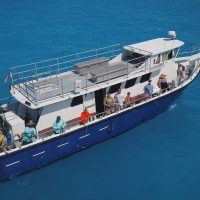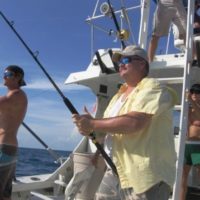Key West Fishing Charters: Gear Up for Grouper Fishing!
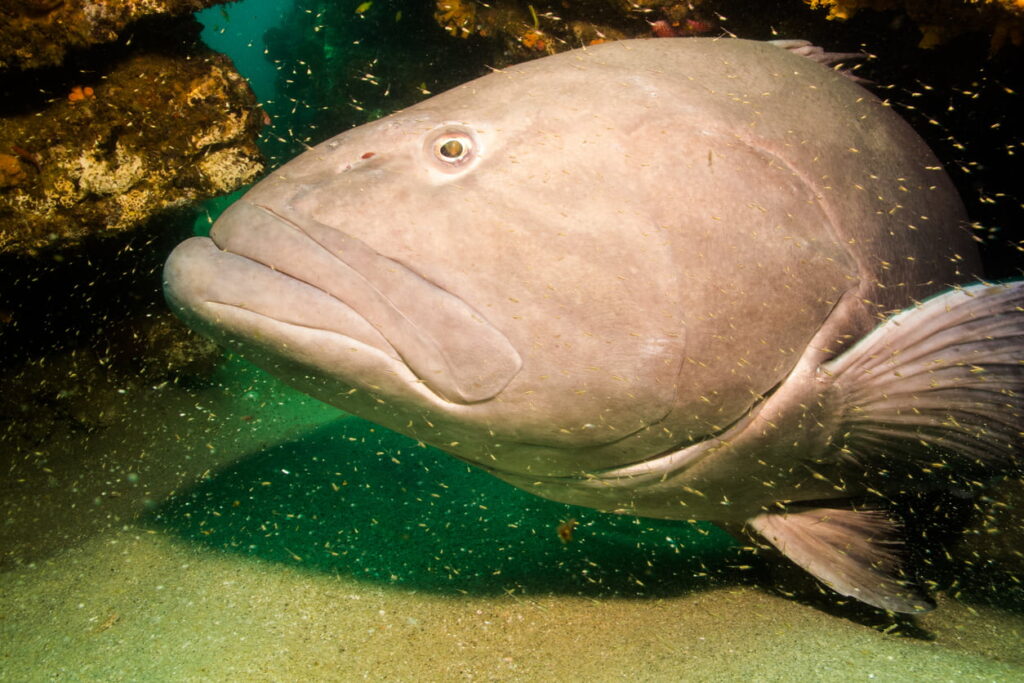
When the late fall to winter transition is in effect here in Key West, water temperatures go down and the schools of baitfish move into the shallows and over the reefs. A nice live well full of fresh pilchards is all that is needed this time of year to guarantee a great day of action on a wide variety of species whether you stay inshore or head offshore to hit the reefs and wrecks.
Another great thing about having plenty of pilchards on hand is that a nice-sized, oily, chunky baitfish like this is perfect for Grouper. Late fall is a good time to go out after some Groupers, especially on those calm days we get between a mild cold front out of the north and the return of the southerly flow afterward. This report is one of a series aimed at providing some background and detail about going out after this very popular hard-fighting, great-eating game fish.
Get Some Grouper Bait
Besides the pilchards, it is relatively easy to find good Grouper bait because these fish will eat just about anything. All Groupers are opportunistic predators that prey on a variety of crustaceans including crab, shrimp, and spiny lobster, squid and octopus, and may types of reef-dwelling fish such as snappers and parrotfish.
Groupers are ambush feeders that snap at any prey item that comes near, sucking food in and swallowing it whole. This is the feature that makes the Grouper fun and easy to catch. They will hit any large bait, live, dead, cut, or whole. The very best bait for Grouper is squid if it is available, but nearly any tasty, smelly morsel of meat will work.
A basic rule is big bait, big fish, and large baitfish like pinfish, grunts, or bigger pilchard are great, but big chunk or strip baits will also bring good results. Artificial lures such as soft baits, feather jigs, and deep-diving plugs are also commonly used on Grouper.
Bring Your A-Game for Key West Grouper Fishing
An angler who goes out after Grouper is looking for a real fight. Groupers are tough fish that hit hard, and since they are always near structure, when hooked they will try to run for their shelter. Then the fight is on.
A fish of 20 pounds or more will usually be able to get into its hole unless the angler is ready to keep it out with heavy tackle and plenty of strength. One thing all Grouper have in common is the ability to stay down and find a hole while you are pulling your arms out of the sockets trying to get the fish up. You will need a heavy rod and a high-quality reel with a tight drag. Braided line is recommended for strength and abrasion resistance when in contact with the rough, jagged structure that most often holds big Groupers.
For the simplest terminal tackle setup, just use a circle hook with live bait or a J-hook with dead or cut bait (or as per local regulations) on a long leader hooked to the appropriate weight for the depth and current. Grouper can also be caught with a wide variety of other techniques. The choice of approach mainly depends on the water depth, type of bottom structure being fished, fishing technique, and the bait being used.
Fishing just off the bottom while anchored, or lowering the bait to mid-water and drifting slowly over structure are two very common ways to target Grouper. A bait-tipped weighted jig bounced off the bottom will also draw strikes if it is dropped near enough to the Grouper’s lair. Trolling live bait or a lure along structure with a downrigger is also very effective.
When trolling for Grouper in shallower water, the heaviest rigs must be used, and the idea is to drag your bait slowly by the fish and draw it off the bottom in an aggressive strike. This method will bring some of the hardest hits you will ever experience, and it also has the advantage of immediately dragging the fish away from its hole. Wire leader is a must in this case, as it will help sink the bait, reduce line stretch, and get the Grouper away from the reef.
In very shallow water, say 6-20 feet over rock piles, grass flats, or patch reef, you may want to try flat lining. This involves positioning your boat up-current from the structure, dropping a lightly-weighted bait in, and letting line unspool as the bait drifts downstream to the fish.
Getting A Grouper Hooked Up
If there are Grouper on a piece of structure or bottom, they are generally going to bite immediately. If you get no action within a few attempts, try changing your presentation depth, drift angle, or location. Remember that the Grouper usually does not like to move far from its home, so you need to get the bait to it. The exception is with schooling fish like the Red Grouper, or during spawning season when all species of Grouper tend to gather in large groups. In these cases, just ring the dinner bell and the game is on.
Whatever method you are using, when the fish hits start cranking to get it up off the bottom and away from its hole. If you are too slow and your fish gets rocked up on you, try letting the line go completely slack. The idea is to take the pressure and threat off the fish and entice it to swim out of its hole where you can take the fight to it again. Be sure to bring plenty of terminal tackle when Grouper fishing, because you will lose rigs to these fish and the snag-riddled structures that they hide in.
Experience Grouper Fishing on an October Key West Fishing Charter
This short introduction to one of the hardest-pulling, best-tasting fish in the sea should get you primed and ready to come on down to Key West and go out to the reefs or the wrecks to pit your strength against a Grouper. Try your hand on some Black Grouper then go out on an expedition to encounter a 300lb Goliath Grouper for the fight of a lifetime and some photos that should keep you in first place in your local biggest fish competition for quite a while.
Fish Key West® is your connection to Key West fall Grouper fishing. Book now using our secure ticketing system and reserve your place on a legendary Key West charter fishing trip.

